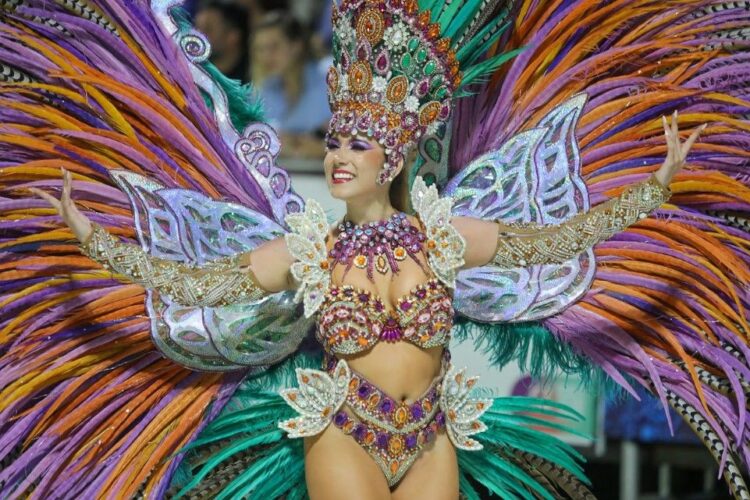
The Rio de Janeiro Carnival is one of the world’s most iconic and vibrant cultural celebrations, attracting millions of visitors from around the globe to experience its dazzling displays of music, dance, and pageantry.
Here’s a glimpse into the spectacle of samba and culture that is the Rio Carnival:
1. Samba Schools and Parades: At the heart of the Rio Carnival are the samba schools, and community-based organizations that compete in the main parade at the Sambadrome. Months of preparation go into crafting elaborate floats, costumes, and choreography for each school’s performance. The parade is a dazzling display of color, rhythm, and energy, with thousands of dancers, musicians, and performers showcasing their talent and creativity.
2. Samba Music and Dance: Samba is the heartbeat of the Rio Carnival, with its infectious rhythms and spirited dance moves captivating audiences of all ages. Samba schools rehearse tirelessly to perfect their performances, blending traditional samba steps with contemporary choreography to create dynamic and engaging routines. Spectators are encouraged to join in the festivities, dancing along the streets and cheering on their favorite performers.
3. Street Parties and Blocos: Beyond the Sambadrome, the streets of Rio come alive with an explosion of music, color, and revelry during the Carnival season. Hundreds of “blocos” or street parties take place throughout the city, with live bands, DJs, and performers entertaining crowds of locals and tourists alike. From traditional samba to funk, reggae, and beyond, there’s something for everyone to enjoy as they dance their way through the streets of Rio.
4. Costumes and Masquerade: One of the most iconic aspects of the Rio Carnival is the dazzling array of costumes and masquerade attire worn by revelers. From intricate feathered headdresses to sparkling sequins and vibrant fabrics, costumes range from the traditional to the avant-garde, reflecting the diversity and creativity of Brazilian culture. Participants spend months designing and crafting their costumes, with many opting to join costume rental groups or “blocos” to fully immerse themselves in the Carnival experience.
5. Cultural Heritage and Tradition: The Rio Carnival is deeply rooted in Brazilian culture and heritage, with its origins dating back to the colonial period. Influenced by African, indigenous, and European traditions, the Carnival is a celebration of Brazil’s multicultural identity and spirit of resilience. Throughout the festivities, there are nods to Afro-Brazilian folklore, religious rituals, and historical themes, highlighting the rich tapestry of Brazilian history and culture.
6. Tourism and Economic Impact: The Rio Carnival is not only a cultural phenomenon but also a major economic driver for the city, generating billions of dollars in revenue from tourism, hospitality, and related industries. Hotels, restaurants, and businesses throughout Rio benefit from the influx of visitors during Carnival season, while the event itself provides employment opportunities for thousands of performers, artisans, and vendors.
7. Global Influence and Recognition: The Rio Carnival has achieved global renown as one of the world’s premier cultural events, attracting media coverage and attention from across the globe. Its vibrant atmosphere, infectious energy, and unique cultural offerings have inspired similar celebrations in cities around the world, cementing its status as a symbol of Brazilian identity and pride.
Overall, the Rio de Janeiro Carnival is a spectacular showcase of samba and culture, a testament to the creativity, passion, and spirit of the Brazilian people. Whether you’re a first-time visitor or a seasoned Carnival-goer, experiencing the sights, sounds, and sensations of the Rio Carnival is an unforgettable journey into the heart and soul of Brazil.
Read more on Travels On Click:
Exciting Festivals and carnivals around the World

